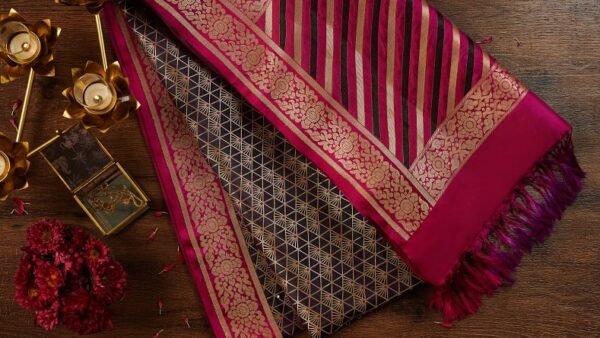The sound of the loom echoes like a heartbeat in cultures around the world, a rhythm that speaks of tradition, artistry, and pride. In Japan, the meticulous art of kimono weaving has been passed down for centuries, with government-supported initiatives ensuring its preservation. In Peru, vibrant Andean textiles continue to thrive, supported by communities proud of their heritage. Closer home, we need to ask ourselves—are we doing enough to protect and celebrate the rich tapestry of India’s handloom traditions?
This question took root during a visit to a weaving village in West Bengal. As I marvelled at the intricate design being woven into silk, the artisan shared, “We create these sarees as our ancestors did, but the world is forgetting us.” That moment sparked a deeper exploration of India’s weaving heritage and the urgency to preserve it.
A Global Pride in Heritage
Countries like Japan and Peru provide powerful examples of how traditional crafts can flourish when their value is recognized and supported. In Japan, artisans practicing Nishijin-ori weaving are designated as Living National Treasures. This official recognition not only elevates the craft but also ensures financial support and respect for its practitioners.
Similarly, in Peru, weaving cooperatives are integral to community life. Tourists flock to experience and purchase these vibrant Andean creations, ensuring a steady income for weavers while keeping the craft alive. These countries show us that traditional weaving isn’t just about fabric—it’s about identity, pride, and sustainability.
India: A Tapestry of Diversity
India, too, boasts a dazzling variety of weaving techniques, each steeped in history and culture. From the bold ikats of Odisha and Telangana to the ethereal jamdanis of Bengal, our handloom traditions are as diverse as the people who create them.
On a journey through Varanasi, I watched a Banarasi saree take shape—a process that could take months. Each motif reflected stories of mythology and local life. In Gujarat, the vibrant bandhani sarees captured the colors of festivals and celebrations. And in the Northeast, Eri and Muga silks told tales of sustainable practices long before they became a global trend.
Each saree I encountered was a masterpiece, but behind it lay a struggle. Aging artisans, lack of demand, and competition from machine-made textiles threaten the survival of these crafts.
Why Preservation Matters
Preserving traditional weaving techniques is more than a nod to the past—it’s a commitment to sustainability, community livelihoods, and cultural identity. Unlike mass-produced textiles, handwoven fabrics are eco-friendly, require minimal resources, and embody the artisan’s soul.
When we lose a weaving tradition, we lose not just a skill but a piece of our history. These crafts are living embodiments of who we are, carrying stories of our ancestors, their lives, and their land.
Tatva’s Vision: Weaving Change
At Tatva, we’ve made it our mission to bring India’s rich handloom heritage into the modern spotlight. By working directly with artisans, we ensure they receive fair compensation and recognition for their craft. Each saree in our collection is more than a garment; it’s a piece of India’s story, woven with pride and purpose.
A Call to Action
As we admire how other countries honor their weaving traditions, let us take inspiration and pride in our own. By choosing handloom, we aren’t just buying a saree—we’re investing in a weaver’s dream, a community’s survival, and a nation’s legacy.
Let’s ensure the sound of the loom never fades in India. Explore Tatva’s curated collection and become a part of the movement to preserve the warp and weft of our traditions.







Leave a comment